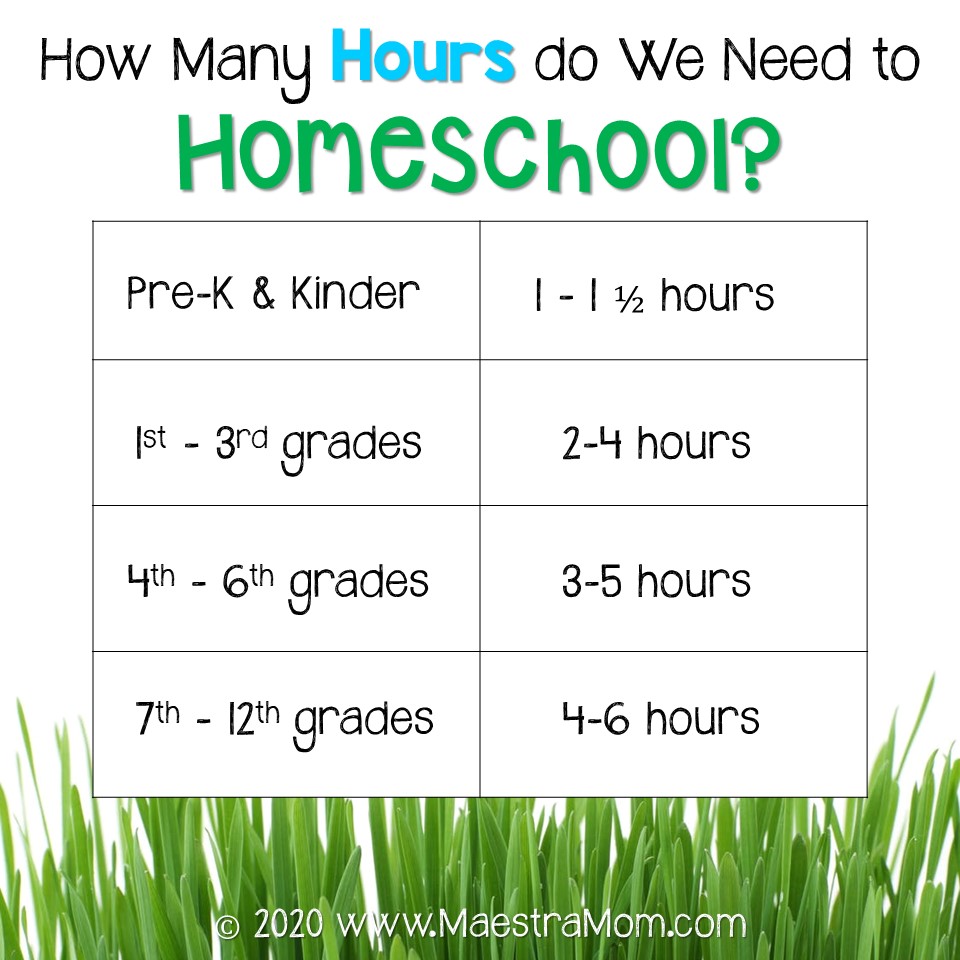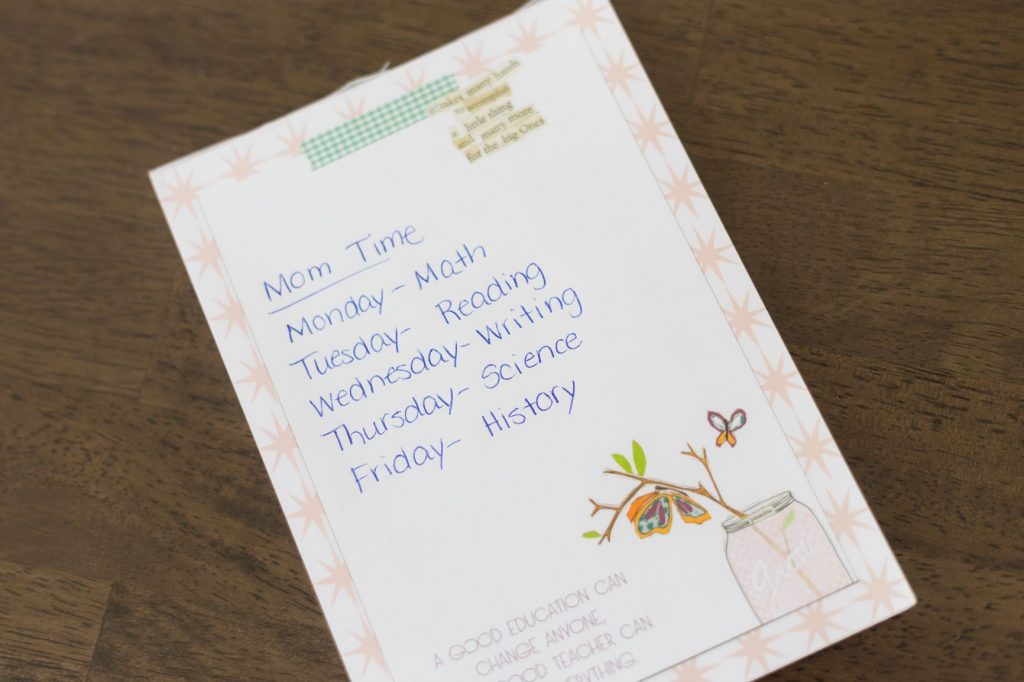Should I homeschool the kids?
This has been the thought running through the minds of lots of parents lately! With the lingering COVID-19 pandemic, districts across the United States have changed the ways in which they educate students. As parents have witnessed an inside peek into classrooms via Zoom and with looming concerns that students are missing out on vital educational growth, many parents wonder, “should I homeschool the kids?”
Hey! If you prefer video, catch the webinar, “Homeschool Behind the Scenes: 10 Key Questions Answered“
Let’s face it, the changes in school make for a lot of disruption for children and parents. Bouncing back and forth between in-person school and online-school is less than ideal. Plus, many parents (and kids!) dread the thought of staring at a computer screen for hours every day. Other parents have simply observed their child’s education from a much more intimate vantage point this past year and shaken their head over concern for the quality of the education their child is receiving. Should I homeschool instead? An option you may not have even considered before may now be paramount in your mind.
So, first things first. There’s no right or wrong here. Some families homeschool, some families public school, some choose private, and some choose online learning or tutors. There’s no one-size-fits all! It is not a moral decision or an ethical one, but it is vitally important for your child. As parents, we all want what is best for our children and doable for the entire family. We want our kids to learn and thrive in their education!
So let’s jump right in and knock out those questions running through your mind as you consider, “Should I homeschool?” And if you’re more comfortable in an audio visual format, jump over here to hear me talk my way through these same considerations in a 30-minute webinar.
1. How many hours of schoolwork do you actually do each day?
The homeschool day is naturally shorter than a regular public school day. At public school, you have to allow time for arrival, departure, waiting in line, bathroom breaks, walking to lunch, eating time, and other transitions. Some students also eat breakfast at school. In most elementary schools, there are “specials” each day like PE, art, or music as well.
Besides all of that, you have transportation time: a bus ride, walk or car ride to get to school and home again each day. (Not to mention mom’s time sitting in the car line or waiting at the bus stop in the rain, right?)
It is surprising how many hours can be cut from the school day when you take all of that out!
As a general ball-park, I tell people to allow for 4 hours for academic instruction in a typical homeschool day. However, that can fluctuate a lot depending on the age of your child and the curriculum you use. Younger kids need less time, older kids need more. For example:

2. What does Mom’s (or Dad’s) role look like in homeschool?
Not ALL of that learning time involves a direct-teach from Mom, either. Have you ever wondered how families with lots of kids can homeschool? Well, we don’t spend every single minute teaching every single child. Homeschooled kids learn to be highly independent and self-motivated with their learning. Mom rotates around, but stays crazy busy!
Pre-K, kindergarten, and 1st graders need their mommas more. Until a child can read well independently, a parent will need to read instructions, model what to do, and work alongside the child interactively with many assignments. But, since their attention spans are shorter, most assignments are quick and still add up to only 1 to 1 ½ hours of mom time each day.

Established readers (usually around 2nd grade) become more independent. Now they can read and follow instructions alone, but still need a lot of assistance and encouragement from a parent to stay on-task and know what to do next.
Somewhere around 3rd or 4th grade, kids transition to being pretty independent with their schoolwork. Their assignments become longer and increasingly in-depth, but the child is more capable of working alone. So, in other words, as their school day gets longer, their time with mom remains about the same (an hour or so a day).
As a child approaches middle school, Mom facilitates more than teaches. This means I design and set up their coursework, establish expectations, make sure it is completed, check their work, and dialogue about their learning. But much of their knowledge is gained independently! During these years, we transition to a system where the kids work from a syllabus (similar to college) on assignments that are spelled out explicitly. I check in on each subject with the kids once or twice a week. Like this:

One benefit of homeschooling is that older students can complete work whenever they want! I have one child who likes to get up early and knock out a subject or two before breakfast before the house wakes up. I have another who is a night owl and does his best work from 9-11pm when his sisters are all asleep and the house is quiet. So, that 4-6 hours of school work daily does not necessarily have to be 6 consecutive hours. This is great news for parents who work! Break school up as needed!
3. How do you know what to teach?
Each child needs to cover the basics of language arts, math, science, and social studies/ history. Some states also require the subject of good citizenship. Language arts includes reading, writing, spelling, handwriting, and grammar. In our house, we think Bible is a non-negotiable subject, too, but you can choose to add in any other subjects such as typing, programming, languages, art, fitness, or music as well!
I cover exactly how to chart out the different subjects for each child and how to decide what to teach in the article Homeschool Planning: 5 Simple Steps,. In some ways, the most important step of homeschooling is planning out the instruction.

4. How do I make sure they don’t miss out on what they need to know to return to public school?
If you think that you may return your students to public school next year, or sometime in the future, you may want to make sure that the material is aligned with the public school scope and sequence. If not, then you have the freedom to move your timeline around quite a bit! By the way, this is why homeschool families with multiple children often teach differing grades the same material during different years. So, they may do Texas History as a family with children in grades 3, 5, and 7 while public schools teach it in grade 4.
Each state publishes their list of required knowledge by grade level. Homeschoolers are not required to follow this schedule. But, this is the law for public school districts of each state. Many states use Common Core Standards. Here in Texas, we use the TEKS (Texas Essential Knowledge and Skills). The TEKS are broken down by grade level and then further broken down into subjects. Any parent can pull up the requirements for your state and use them to guide decisions about what to teach for any grade level. If you’re worried about your child missing something, just print a copy of the guidelines for the child’s grade level, and make sure everything gets covered over the course of the year.
Sometimes, as parents, we feel we are not qualified to teach certain subjects to our children. In those areas, reach out to other parents, empty-nester homeschool moms, tutors, or online teachers. Remember, you are building and facilitating your child’s education, but that does not mean you have to be your child’s only teacher!

5. Where do you get your curriculum?
If you want, you can choose to use the exact same curricula that your children have been using in public school. Your child’s teacher from last year would probably be happy to tell you what they used. However, some teachers, even in public school, create their own and do not use district adopted materials. Choice of materials is often left up to the teacher individually. For myself, when I taught public school, I rarely if ever used the state adoptions.
In the same way, it is left up to homeschool parents to decide what curriculum to use at home and there are MANY options! Be aware, though, that some curricula are designed for school settings while others are especially fitted for individuals in the homeschool setting. One huge benefit of choosing your own curriculum is that you can tailor it to the learning style of your child. If your student is leaving public schools, evaluate what subjects were working well and which were a struggle. This is a chance to try something completely different and see if it helps him thrive!
There are some publishers, such as Handwriting Without Tears and Saxon, that are common in both homeschool and classroom settings. Other publishers cater only to homeschoolers. It is common to find homeschool materials written from a Christian worldview, which you see most prominently in science and history materials, such as Apologia and Story of the World. This opportunity to shape the hearts of our kids through the lens of Christianity is one of our favorite aspects of homeschooling!
One great resource for finding homeschool materials is Cathy Duffy Reviews. I also go into more detail about that in this blogpost about homeschool planning. Another wonderful way to learn quickly about available homeschool materials is to attend a homeschool conference, where publishers come together to showcase their products. We have attended the Texas Homeschool Coalition Conference, but there are many around the country.
6. How do you know a curriculum is accredited so they get into college?
Brick-and-mortar schools as well as virtual online schools must be accredited in most states. But, good news! Homeschools do not have to worry about this at all! The curriculum you choose to teach your child does not affect this aspect of homeschooling. Only schools can be accredited, not a curriculum. And this is a great thing, because both local schools and individual homeschools can choose curricula suited to the needs of their students!
If you have a high school student, however, then you do need to be very careful about meeting your state’s minimum requirements for graduation. Colleges may not consider a student who has not met a state’s minimum requirements or taken necessary tests. In Texas, a student needs 22 or 26 credits in order to graduate from high school. You can download Texas high school graduation requirements and also compare requirements for all 50 states.

7. What are the legal requirements to homeschool?
Homeschool laws vary by state. In fact, they range widely! The Homeschool Legal Defense Association provides an amazing overview of legal requirements broken down by state.
Some states require certain subjects be taught, some have attendance rules, others require testing, or oversight by a local teacher or district. Many states require that a parent give notice of withdrawal of the child from the public school system. Before you make the decision to homeschool, make sure you investigate what is required in your state.
Legally, parents are not required to issue grades to students in their homeschool. However, some states do require that parents maintain a portfolio of work or take state assessments. Most homeschool families choose to give tests in such areas as math and spelling as well as other subjects. Many homeschool materials come with assessments as part of the curriculum that you can choose to use or not. Even if not required by law, it is a good idea to save samples of a student’s writing, math, spelling and other subjects representing at least the beginning, middle, and end of each school year. Plus, it is fun to look back over their work to see growth and remember how cute their handwriting used to be!
If you are planning to re-enroll your children in public school after homeschooling temporarily, you can ask the local district if there is any documentation needed, but legally it is not required in lower grades. High school students will need grades as part of their high school transcript. The Homeschool Legal Defense Association offers several useful articles about grading before the high school years.

8. How much does it cost to homeschool?
This answer can vary greatly as well! Just like buying a car, you can buy used & budget-friendly or spend a fortune on a high-end model. In general, you can plan on several hundred dollars per child per year. If you join a homeschool co-op, they can range from free to in the thousands per child per year.
Here are the main expenses you will probably need to plan for:
- A desk or table (or the kitchen table!)
- Books
- Workbooks
- School supplies
- A computer & headphones (optional)
- Digital materials (online subscriptions, DVDs)
- Math manipulatives
- Science lab materials
- A cart, tubs, or organization system
- Shelving for books
Books can be expensive and will be your major cost of homeschooling. It is not uncommon for a single subject, especially math, to run around $100 per child for a major math publisher. However, especially in the lower grades, some families save money by using simple math workbooks picked up almost anywhere. In lower grades, many families rely heavily on the library for studies in science and reading materials.
We buy most of our books used to save money. There is a robust market out there for buying and selling used homeschool materials! If you have multiple children and plan to homeschool for several years, you can also cut costs by re-using textbooks from child to child over the years.
You might actually save $$$ in some surprising ways, too!
Most parents accustomed to public schools are used to spending $40+ dollars on school supplies each year and quite a bit more for school clothes, backpack, lunchbox, new shoes, etc. Not to mention the money you put out for the fall fundraiser, the spring carnival, and the big field-trip.
One a-ha for me when we transitioned to homeschooling was that our overall costs didn’t go up as much as I expected, but our money was allocated in different ways. We ate at home, which saved money on pre-packaged food and school lunches. Less time in the car meant less money spent on gas each week. Also, I stopped working and no longer needed business clothes or dry-cleaning, so that was another place to cut costs. If a parent stops working, you may also save costs from child-care as well.
Homeschool kids don’t need as many clothes, either. Honestly, my kids stay in pajamas a lot of days or wear hand-me-downs. They also don’t need as many shoes. They don’t use a backpack or lunchbox. What they need is books, materials to learn, and a willing heart..
What are some free options?
While most curriculum cost money, there are some good materials out there for FREE! What? Yes! Free! We have used some of these for portions of our curriculum over the years, but others rely on them almost completely. If you’re unsure how to begin, this is a great starting place!
- Easy Peasy Homeschool for grades K-12
- The Good and the Beautiful for grades K-5
- Kahn Academy for math
- Ambleside for grades K-12

9. How do you homeschool different grade levels all at once?
This is perhaps the most daunting and scary part of homeschooling. Schooling multiple kids in different grades in a limited amount of time. Yikes! One room schoolhouse, anyone?
Parents have come up with several ingenious ways to accommodate multiple grade levels:
Teach Family Style
Combine grade levels for topics like Bible instruction, science, history, and read-alouds. Some publishers like Sonlight and My Father’s World are complete curricula designed to accommodate several grade levels at once, served up family-style. Keep in mind, too, that some subjects can be taught better hands-on to children, instead of workbooks, and parents can differentiate the learning by simply assigning additional reading or work to older children.
Virtual Learning for Certain Subjects
In our house, we farm math out to virtual teachers for our older children. My son uses Teaching Textbooks, a curriculum with a CD or online lesson daily. My daughter uses Saxon and watches her math lesson online through Nicole the Math Lady. We prioritize hands-on learning and real books over virtual instruction, but have found online learning in small amounts can significantly relieve the burden on the primary teacher (Hi, Mom!). Some homeschoolers rely even more on virtual instruction, such as attending online schools like iUniversityPrep or dual-credit college courses conducted online during high school years. Dual Credit At Home is a phenomenal source for those interested in dual college credit options for high school students.
Collaborative Learning
Older children can read aloud to younger siblings, give them spelling tests, or go over math facts with them. Everyone knows that the person who learns the most is the one who teaches! Teaching younger siblings is a great way to foster family love and reinforce learning for all involved! In our family, Daddy is very involved in the children’s school instruction, too. Each year he chooses a subject to do with each child. In one family I know, the father is in charge of all the science instruction, which they do in the evenings when Dad is home from work. There is no reason why Mom has to be the only teacher in the house!
Working Together but Apart
You can have all the kids do silent reading for 20 minutes, but each is reading on grade level. Or, all kids work on hand-writing, but one child may be learning to print while another does cursive. Some families prefer sitting together at one large table and staying more or less in-sync by subject: math for the 1st hour, reading next, and so-on. Other families choose to school all over the house and allow each child the freedom to organize his routine as needed. This will depend largely on the personality and ages of your kids!
Small Group Instruction
Otherwise known as mom-to-kid time, or in our house: snuggle time. I allocate around one hour per day of face-to-face time with each child to teach what that child specifically needs. With older kids, we do this on a rotating subject basis as previously mentioned and check all work completed that week for understanding. For younger kids, we spend around 10-15 minutes on each subject and cover multiple subjects together every day. We like to do this lounging on the sofa curled up under a blanket!
Independent Learning
While many subjects are great for whole-family instruction, kids need specific grade level teaching on certain subjects – especially language arts and math. It is hard to “share” spelling instruction when kids are on different grade levels! Many families use more of a college-style approach to homeschooling, where students “meet” with the teacher (mom) once or twice per week and otherwise do their reading and work independently. They learn to read texts for comprehension and understanding. This takes awhile to train a child to be independent! Don’t expect that immediately if you are just transitioning!

10. How do you get your kids to listen to you as teacher?
This might just be the toughest thing of all – but it is doable! Any parent that has transitioned their child from school outside the home has probably heard, “that’s not the way my teacher did it!” We have found it helpful to define definite times of day as “school” and minimize household interruptions such as laundry, phone calls, and chores. When it is school time, we only DO SCHOOL and nothing else.
For homeschool to succeed, you need to get your kid on board to take ownership of their own learning. In some ways, in attending public school, a student is a passive recipient of their education. Teachers, administrators, and law personnel decide what and how a child will learn. That’s not the case for homeschooled kids.
In a homeschool environment, it helps to have a frank talk with your child about the idea of owning and creating their own education. You get out of it what you put into it. Be honest and tell your kid, “I won’t always know all the answers and neither will you, but that’s what learning is all about!”. Model for your child that when you don’t know something, you can go figure it out. Let them see you do a Google search for how to hold a pencil correctly or pull up a Pinterest diagram of parts of speech. Make learning an adventure you do together! The sky is the limit!
But, ultimately, learning obedience and submission as part of a godly character is of much greater importance than learning multiplication facts. Set your child up for success and dialogue about how you can make homeschooling work. Then set the standard for compliance and respect in your homeschool. Don’t tolerate disrespect or lazy work completion. Learning to “do school” with willingness is ultimately a heart issue.

Should I homeschool next year?
You’re the only one who can answer that question! It is my prayer for you that with God’s help you will make the right decision for the children in your family. No matter which educational route you take, I’m here to help you in your journey. I’d love for you to join me as part of our teaching & mothering community!
Next steps:
What is a homeschool co-op and should we join one?
First Steps for Homeschooling a Special Needs Child
5 Compelling Reasons to Teach About the First Thanksgiving
Help! 7 Tips for how to Homeschool a Strong-Willed Child
Homeschool Discipline: 5 Simple Steps to good behavior
Ultimate Parent’s Guide to the New SAT: 5 Critical Things to Know








I have been homeschooling since the beginning, and after reading this, it still gave me more resources to consider and revitalize my abilities in schooling my four kids! I can do this, and if you choose to, so can you!
I’m so glad it was helpful to you in your homeschooling journey!
I’m currently homeschooling the last two of four. My eldest two have graduated from Liberty University, in Virginia. This is a great post and will be extremely helpful for someone who is intimidated or nervous to begin homeschooling. Thank you for your beautiful posts.
Congratulations on successfully homeschooling your kids! Sounds like they are off to a great start in life. Thank you for your encouragement!
This post is jam packed with great information! I’m years away from homeschooling, but I learned a lot.
I’m so glad you were able to glean some good info!
I never considered homeschooling when my boys were that age. If I had it to do over again, I would definitely consider it. But then again, I am in a completely different place than I was then.
Life definitely has different seasons to it. Sounds like you’re in a good place now to help others who might be considering homeschooling with their children.
These are great factors to consider as many are considering this in today’s world.
Thanks, Adrienne! Parents today certainly have a lot to think about. Hope this helps!
Very informative post. The chart describing how many hours each grade level requires was super helpful for me, and the section on how to know what to teach. My son is almost 2, so I have some time. But I am still on the fence about what I want to do for schooling. This post has definitely been helpful.
Christina, It’s never too early to start planning! I’m so glad it was helpful to you!
This is so timely and a great source for many parents considering homeschool right now. Lots of parents are struggling to decide what’s next, and I think this can help!
Thanks, Jessica! I hope it does help!
I find this so interesting! The education hours chart I find shocking actually – compared to how often I was in school as a young kid haha! We don’t have kids but my husband said he would love to homeschool if given the option.
Sarah, yes! One of the big benefits of homeschooling is the extra free-time for play or other pursuits! I’m glad you found it interesting and eye opening!
When I stopped teaching and became a stay at home mama I thought I’d like to try homeschooling when my kids started school. Our oldest needed the social interaction very much. But know with everything going on I’m leaning to homeschooling next year. My son has grown so much socially. My oldest two will be in 3rd and 1st, great grades to homeschool. This was a very helpful read!
Stephanie, 1st and 3rd are great grades to homeschool! Many blessings to you in your new adventure!
Thank you for outlining all the information it takes to homeschool.
You’re welcome!
These are great resources!
Great things to consider! I think if I had kids I would ideally like to homeschool them, but it would definitely depend on their personality and our relationship and things like that because I would want it to be a positive experience for everybody. Like in the movie Matilda, she was nothing like her family, so her parents homeschooling her would be pointless, but once she’s with Miss Honey that would be a perfect scenario for homeschooling.
Eva, yes, there are so many things to consider and a wise mama always thinks about what is best for each child according to circumstances!
This is definitely helpful for someone who is considering homeschooling. With the pandemic, I think there may be a rise in homeschooling.
Yes, this pandemic has changed the many America does school! I’m so glad you found it helpful.
This is super important with many schools allowing the option of remote learning.
Pingback: How to Do Homeschool Planning - Maestra Mom - 5 Simple Steps
Pingback: How to Talk to Kids about Coronavirus - Maestra Mom - FREE printable
Pingback: Why I Homeschool My Kids - Maestra Mom - Why Choose Homeschooling
Pingback: Top 10 Tips for New Homeschoolers - Maestra Mom
Pingback: Phonics for Kindergarten and Pre-K - Maestra Mom -
Excellent post on the pros, cons, and how tos of homeschooling!! You’ve also shared great resources!!
Pingback: Workboxes! My #1 Homeschool Organization Hack - Maestra Mom